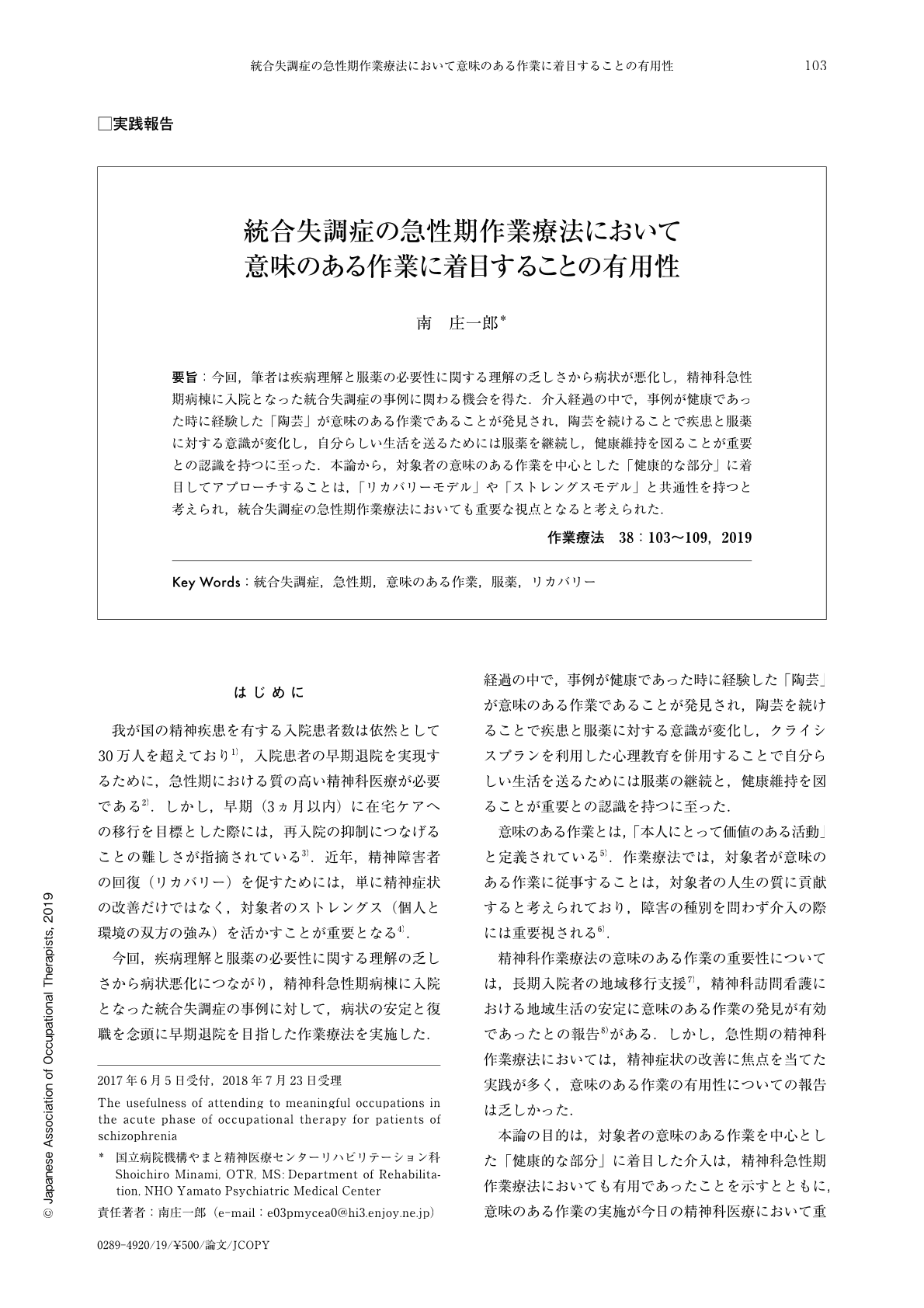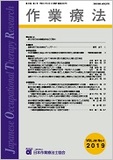Japanese
English
- 販売していません
- Abstract 文献概要
- 1ページ目 Look Inside
- 参考文献 Reference
- サイト内被引用 Cited by
要旨:今回,筆者は疾病理解と服薬の必要性に関する理解の乏しさから病状が悪化し,精神科急性期病棟に入院となった統合失調症の事例に関わる機会を得た.介入経過の中で,事例が健康であった時に経験した「陶芸」が意味のある作業であることが発見され,陶芸を続けることで疾患と服薬に対する意識が変化し,自分らしい生活を送るためには服薬を継続し,健康維持を図ることが重要との認識を持つに至った.本論から,対象者の意味のある作業を中心とした「健康的な部分」に着目してアプローチすることは,「リカバリーモデル」や「ストレングスモデル」と共通性を持つと考えられ,統合失調症の急性期作業療法においても重要な視点となると考えられた.
A case of schizophrenia was admitted to psychiatric acute period ward due to poor understanding of the disease and compliance with taking medication. It was discovered during intervention that ceramics was a meaningful occupation prior to the onset of the illness. Awareness of schizophrenia, compliance with taking medication and recognition of the importance maintaining health improved by continuing ceramics. Thus, focusing on ‘healthy parts’ which center on the subject engaging in meaningful occupations is in line with the ‘recovery model’ and ‘strength model’, making it important in the acute phase of occupational therapy for patients with schizophrenia.

Copyright © 2019, Japanese Association of Occupational Therapists. All rights reserved.


